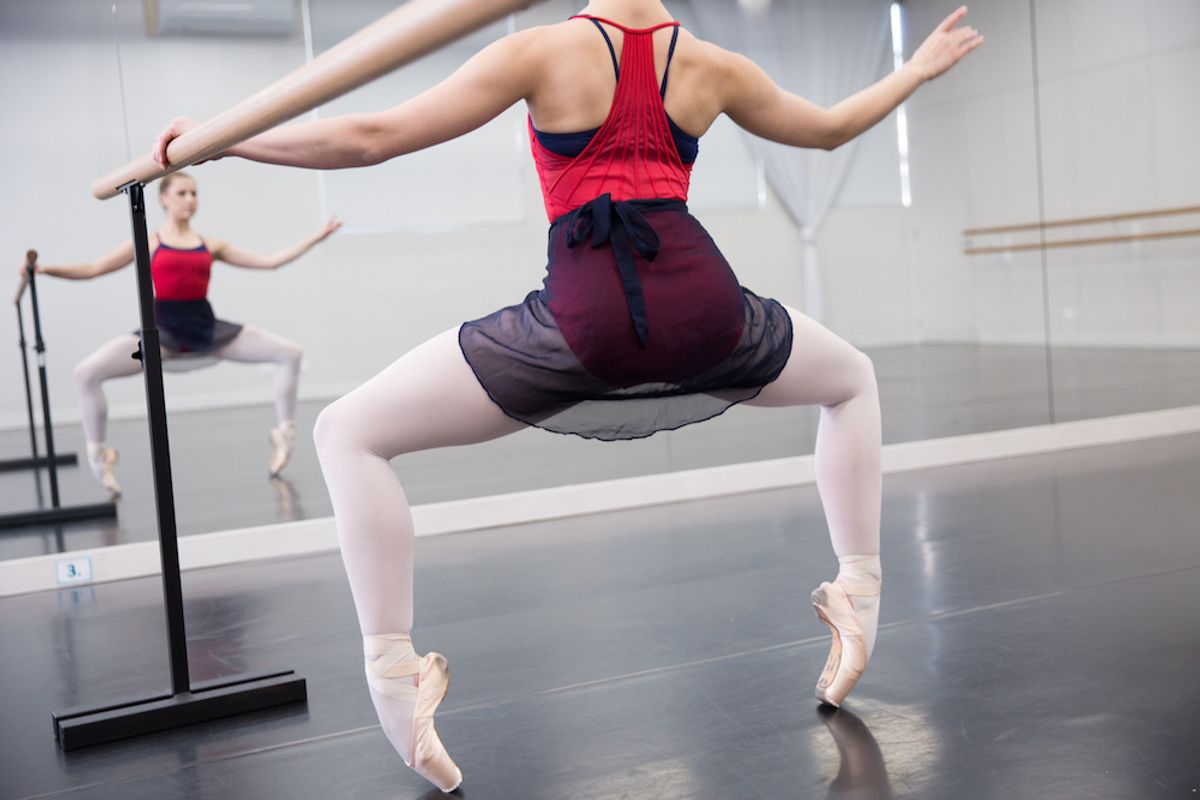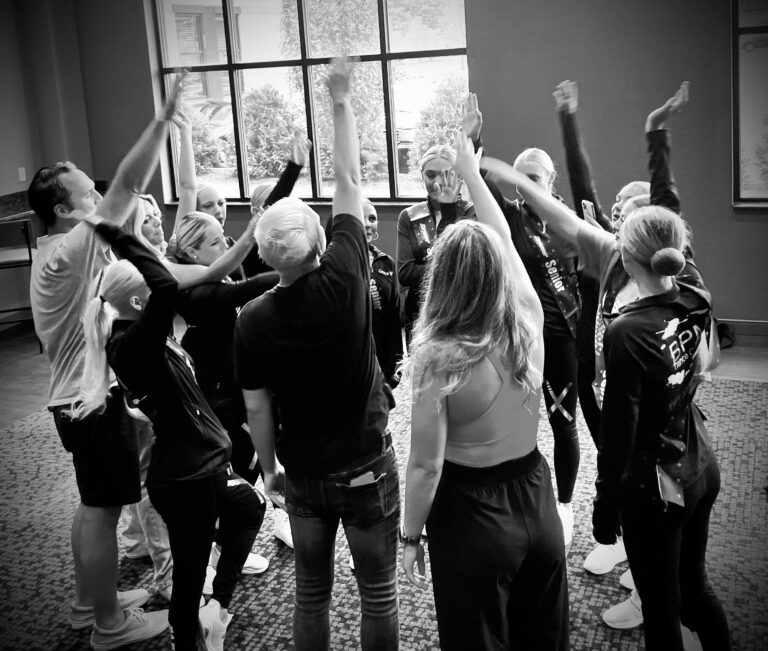
As deeply familiar as dancers are with their bodies, there’s one muscle group that can remain mysterious. You can’t see it, and it can be tough to access, but the pelvic floor serves a major role in your posture and body function. Dancers and other athletes are more prone than the general population to dysfunction of the pelvic floor, and this can have major ramifications in dance and life.
The Anatomy
The pelvic floor is an interconnected series of about two dozen muscles that form a horizontal hammock (or sling) inside the pelvis. It anchors to the pubic bone in the front and the coccyx in back, as well as several points around the inside of the pelvis. The urethra, the opening of the rectum and the vagina pass through the pelvic floor. The bladder, colon, uterus, digestive organs and even the lungs and heart are supported from below by this sheet of muscle. Its contracting and relaxing control important functions, like going to the bathroom or holding it in, giving birth and enjoying sex.
Potential Problems
When dancers repeat high-intensity activities like jumping, the impact of landing stresses the muscles of the pelvic floor over and over again. Improper technique can make this worse. Dancers can ease the impact by rolling through the feet, ankles and legs into a plié.
Dancers can be dysfunctional breathers, says dancer, yoga instructor and doctor of physical therapy Kathryn Maykish. They overly tense their abs and fill the upper chest with air when they breathe, rather than allowing the stomach to expand on an inhale. As the chest pulls up, the pelvic floor comes up with it, keeping the muscles from fully releasing.
It’s also common for dancers to compensate for overworked or weak abs, back, hips and inner thighs by squeezing or tightening the pelvic floor without even realizing it. Interestingly, because of the close connection between these muscles, pelvic floor dysfunction can sometimes play a role in lower-back pain, anterior hip pain and other issues or injuries in the groin and pelvis area.
Tight vs. Weak
There are two main kinds of pelvic floor dysfunction. One involves muscles that are too weak, which can cause incontinence: bladder or bowel leakage. Incontinence can show up as a sudden urge to use the bathroom that you just can’t control in time. Or, you might experience a little leakage when you cough, laugh or land from a jump. Maykish says dancers may not realize that it’s a health concern if they leak a little during petit allégro. “If you have a student who’s always running to the bathroom before jumping,” she says, “it’s worth having a conversation.”
The other type of dysfunction is when muscles are too tight. (And yes, it’s possible to experience both types at once—tension doesn’t necessarily mean the muscles are strong.) Dancers may feel the frequent extreme urge to pee—as much as 10 times a day or more—but only a little comes out. Tension in the pelvic floor can also make it difficult to use a tampon and cause pain during gynecological exams or sex. Or a dancer may feel a pain deep inside their pelvis that seems like hip pain, but they can’t quite point to it.
Solutions
If you’re seeing early signs of muscle weakness, practice gently engaging your pelvic floor when you land jumps. “It’s not all about a squeeze,” Maykish says. “It should be a gentle lifting sensation, like tightening up the ends of that hammock.”
Practice Kegels, too, if incontinence is a concern. Don’t overdo it, though, or you can wind up with the other problem—tension. “The common thing we think as dancers is, ‘Oh my gosh, if this thing isn’t working hard enough, I have to go work it harder,'” Maykish says. “In order for these muscles to work, they have to have a chance to relax, too.” Engaging the muscles continuously won’t make them stronger. Stretching with hip openers is helpful for both weakness and tightness. Consider seeing a professional, especially if symptoms change or worsen.
What to Expect With Treatment
A licensed PT with certifications in pelvic floor therapies can help you identify what exercises you need. The clinician should have a private room for pelvic floor therapy, and allow an adult to accompany a minor inside. They should always ask for permission before they do an internal exam and wear gloves for it. People can be a little apprehensive about pelvic floor therapy, Maykish says, but a good clinician will prioritize the patient’s comfort. “Always my patient is in charge and can direct the exam,” she says. An internal exam by a PT does not involve stirrups or speculum; just one gloved finger inserted into the vagina to feel for the muscles of the pelvic floor. “The therapist will go systematically to test the strength and range of motion of the muscles.” They should be looking for the patient’s feedback, and back off if something feels too uncomfortable. “I think most patients find their fear or anxiety about the exam is bigger than how it actually goes.”




